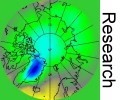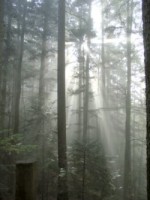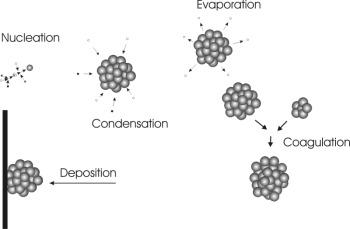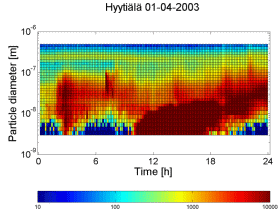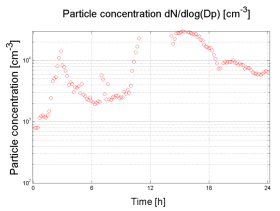 > ACCENT en > Nr 2 June 2005 forest/aerosols > R: Forest flavour, particles & clouds
> ACCENT en > Nr 2 June 2005 forest/aerosols > R: Forest flavour, particles & clouds
|
How forest smell forms particles and allows clouds to grow |
Hyytiälä Hyytiälä is a research station in the Finnish forest. Here, atmospheric scientists from the |
|
|
In the morning, when the sun rises, trees in the forest begin to be biologically active. They release many chemical compounds like isoprene or monoterpenes as gases to the atmosphere. Such organic chemicals give the typical flavour to the air in the forest. Oxidation and particle formation The organic compounds are oxidised in the air, for example by OH radicals. Often the oxidised compounds have a much lower vapour pressure than the gases originally released by the plants. They tend to condense.
|
|
If we compare particle sizes, it is hard to imagine that such little particles can be detected at all. To separate particles by size, scientists use instruments that deflect charged particles in an electric field. The smaller the particles, the more mobile they are and the easier to deflect. Coming out of such a so called 'differential mobility analyser' (DMA), vapour is condensed on them so that they grow up to a detectable size. In a nutshell, detection of very small particles takes place in three steps: 1) charging 2) separation 3) growth + detection.
|
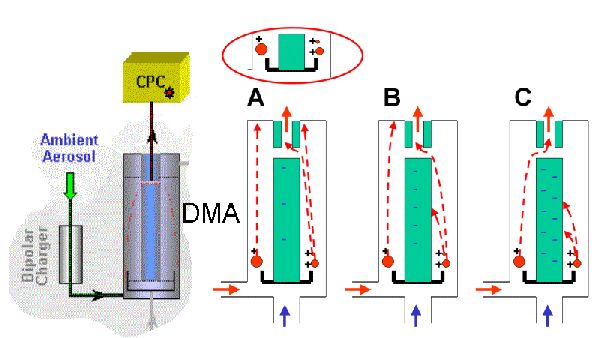 |
|
5. Particle analysis: Particles are charged, separated and counted (CPC - condensation particle counter). The schemes on the right show how particles (red) of three different sizes are selected by changing the strength of the attracting field (increasing from A to C).
|
|
Compared to large organic molecules or salts, pure water is a very volatile species. Water molecules cannot really form clusters in the air, stick to each other and form cloud droplets. A water cluster, if formed, would evaporate again. Water condenses on the tiny particles (aerosols), which are already floating in the air. If more and more water molecules condense on them, a droplet is formed. The condensation process depends very much on if the particles like water or not, i.e. on their chemical composition.
|
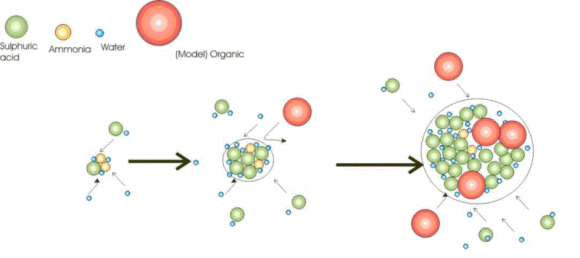 |
|
6. Growing process of particles, scheme: Ari AsmiParticles consist of single molecules with certain chemical properties. The chemical composition of the smallest particles can vary:
|
|
|
Today, particles of less than 1 nm can be detected and nucleation events observed. Here the biological activity of the forest plays a role. On the graphs above we see how high concentrations of very small particles are measured in the morning hours in the forest of Hyytiälä by a particle analyser. Most of the material comes from the trees and it may have an influence on the kinds of clouds formed on this spring day in 2003. 9. Measurement tower for analysis of forest air in different altitudes in Hyytiälä.
|
|
